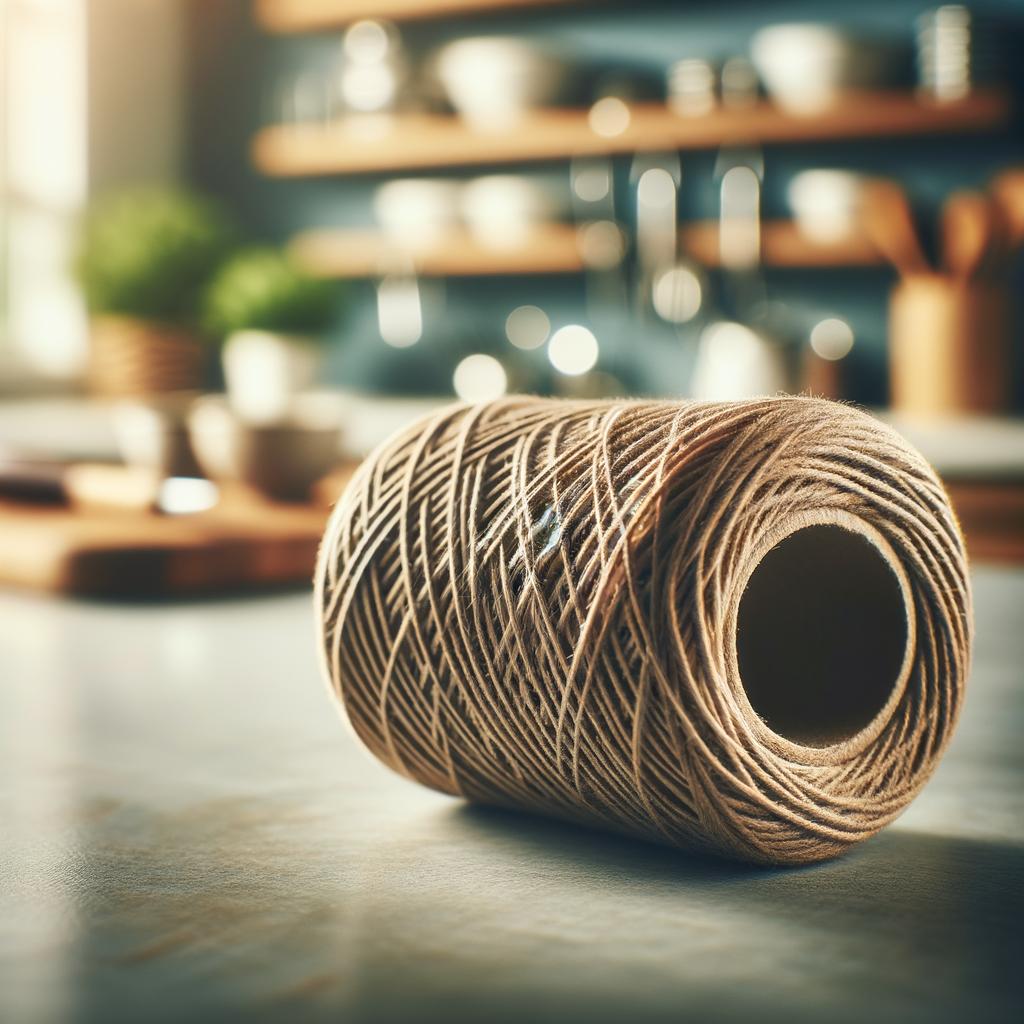Kitchen Twine

Description Kitchen twine, also known as cooking twine or butcher's twine, is a humble yet indispensable tool in gastronomy. It's a thick, sturdy string, typically made from cotton or linen, and is often white or off-white in color. It's texture is coarse and durable, designed to withstand high cooking temperatures without burning or fraying. While it may not have a flavor profile of its own, its unique characteristic lies in its ability to subtly enhance the flavors of the food it comes in contact with by keeping ingredients compact during cooking, allowing flavors to meld together harmoniously.
Primary Uses In the culinary world, kitchen twine is commonly used to truss poultry or tie roasts to ensure even cooking. It's also used to bundle herbs into a bouquet garni, allowing the flavors to infuse into soups and stews without the herbs dispersing throughout the dish. From French cuisine to Italian and beyond, kitchen twine is a key component in many dishes, helping to shape meats, secure stuffed foods, and even hang sausages for curing. Outside the kitchen, it's often used in crafting and gardening.
History The use of twine in cooking dates back to ancient times when people used plant fibers or animal sinew to truss game for cooking over open fires. It was the Romans, however, who elevated its use in gastronomy, using it to truss peacocks and pigs for their lavish banquets. Over time, as cooking techniques evolved and became more refined, so did the use of kitchen twine. In folklore, it's often said that a good chef can truss a chicken blindfolded, a testament to the importance of this simple tool in culinary arts.
Nutritional Information As kitchen twine is not a consumable ingredient, it does not have nutritional value. However, its role in cooking can indirectly influence the nutritional profile of a dish. For instance, trussing a chicken ensures even cooking, preserving the nutritional value of the meat. Similarly, tying a bouquet garni allows for flavor extraction without the need for additional salt or fat. While it may not nourish us directly, kitchen twine certainly plays a pivotal role in the creation of nutritious and delicious meals.

